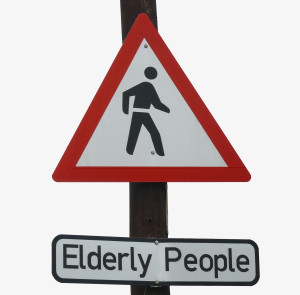Wh y, after all these years, are we still talking, reading, and writing about why abortion should (or shouldn’t) be legal? In the United States, at least, so long as a woman’s right to control her own body is under threat, we must continue to have this discussion and tell our stories.
y, after all these years, are we still talking, reading, and writing about why abortion should (or shouldn’t) be legal? In the United States, at least, so long as a woman’s right to control her own body is under threat, we must continue to have this discussion and tell our stories.
Katha Pollitt, author, essayist, poet, and long-time columnist for The Nation, has a new book: PRO: Reclaiming Abortion Rights. In spite of any number of social advances, we must not forget how things used to be. Pollitt does a terrific job of laying out old arguments in a new way, and of contributing fresh thinking about women, childbirth, and abortion.
This is one of the rare instances where I’d love to be able to quote the whole book. Pollitt’s writing is both rational and elegant, a superb set of arguments for the rights of women, for the non-personhood of an embryo, for logic and fairness to be applied to abortion laws. She cites statements from fundamentalists, the Catholic Church, and even the Centers for Disease Control to point out fallacies, illogic, and very old-fashioned misogyny that tilt the national conversation about abortion.
“Pro-life,” by the way, is a huge misnomer that takes a vast amount of chutzpah to apply to those who would make abortion illegal. “Women Controllers” would be much more accurate.
9 ABORTION INSIGHTS:
The following quotes are all direct from PRO (I’ve removed Pollitt’s footnote indicators):
1. Abortion has always been common. “American women had great numbers of abortions throughout our history, when it was legal and when it was not. Consider this: At the beginning of the nineteenth century effective birth control barely existed and in the 1870s it was criminalized—even mailing an informational pamphlet about contraceptive devices was against the law and remained so until 1936. Yet the average number of births per woman declined from around 7 in 1800 to around 3.5 in 1900 to just over 2 in 1930.”
2. The pro-life movement is powerful. “The self-described pro-life movement may not represent a numerical majority—only 7 to 20 percent of Americans tell pollsters they want to ban abortion—but what it lacks in numbers it makes up for in intensity, dedication, cohesion, and savvy.”
3. It’s about more than the unborn. “The anti-abortion movement, however, is not just about ‘the unborn.’ It is also a protest against women’s growing freedom and power, including their sexual freedom and power. That is why it is based in churches with explicitly limited roles and inferior status for women. . .”
4. Abortion is rational, not evil. “Terminating a pregnancy is always a woman’s right and often a deeply moral decision. It is not evil, even a necessary evil. . . . Motherhood is the last area in which the qualities we usually value—rationality, independent thinking, consulting our own best interests, planning for a better, more prosperous future, and dare I say it, pursuing happiness and dreams—are condemned as frivolity and selfishness. We certainly don’t expect a man who accidentally impregnates a woman to drop everything and accept a life of difficulties and dimmed hopes in order to co-parent a baby.”
5. Fertilized eggs aren’t people. “The bedrock argument of the anti-abortion movement is that intentionally ending new life at any point after conception is murder, or close to it. A fertilized egg is as much a person as Pope Francis. Not a potential person, but a person at that very moment. . . It is hard to see how a fertilized egg qualifies as one. It has no brain, no blood, no head, organs, or limbs; it cannot think, feel, perceive, or communicate. It has no character traits or relationships and it occupies no social space. It is the size of the period at the end of this sentence. Before it implants in the uterine wall, and usually for quite a while after that, the woman in whose body it exists does not even know it is there. In fact, about half of all fertilized eggs fail to implant and are simply washed out of her body with her menstrual flow. If fertilized eggs are persons, God is remarkably careless about them. They are potential persons, yes, but that is not the same thing as actually being one, any more than my being a potential seventy year-old means I am one now.”
6. Why the focus on women’s virtue? “The obsession with women’s virtue infuses the abortion debate even for some who want it to be legal. Is she promiscuous? On drugs? Does she want an abortion out of genuine hardship or is she taking the easy way out? If she were a serious responsible person, the thinking goes, she wouldn’t have gotten pregnant (Haven’t these people ever heard of condoms?). So having an abortion becomes an evasion of the responsibility to be prudent and continent. Yet it is precisely because having a baby determines so much about a woman’s life, and because women take maternal responsibilities so seriously, that they have abortions.”
7. Contraception should be easy. “The way we distribute contraception reinforces the view that there’s something unusual about having a sex life. It’s too medicalized, as if a woman still needs a doctor’s permission to have sex without risking pregnancy.”
8. Do we need babies to sacrifice? “There’s a steady drumbeat of conservative punditry warning of all the terrible things that will happen if women don’t have enough babies. There won’t be enough children to fuel consumer spending, enough workers to support Social Security, enough clever young people to invent things, enough Americans to best the Chinese in the race for world domination. ‘The widespread practice of abortion culled an entire generation’s worth of babies that otherwise might have been born,’ laments Jonathan Last. Without plenty of young people, the right-wing writer David Goldman frets, war will become impossible: ‘A people without progeny will not accept a single military casualty.’”
9. Getting involved is critical. “Clinic doctors, nurses, directors, and employees risk their lives to help women. Patient escorts, abortion-fund volunteers, bloggers, organizers, lawyers, and thousands of other activists work tirelessly to keep abortion legal, expand access, change the discourse, and sway the vote. But it’s the millions of pro- choice Americans who are so far uninvolved (and still complacent) that will ultimately decide the fate of legal abortion in this country.”
Highly recommended.
Copyright (c) 2014 by Susan K. Perry, author of Kylie’s Heel


 Skepticism is sometimes given a bad rap.
Skepticism is sometimes given a bad rap.
 It’s said that age is just a number. Sure it is. But I wonder why that number, the one that implies, “Now you’re actually old,” varies so widely among individuals.
It’s said that age is just a number. Sure it is. But I wonder why that number, the one that implies, “Now you’re actually old,” varies so widely among individuals. The following narrative is closely based on a deeply moving conversation I had with “Knut,” an elementary schoolmate whom I’d never forgotten, and with whom I managed to get back in touch just as he was facing his mortality. In this novel excerpt, the grieving narrator, an atheist, is trying to decide her own future.
The following narrative is closely based on a deeply moving conversation I had with “Knut,” an elementary schoolmate whom I’d never forgotten, and with whom I managed to get back in touch just as he was facing his mortality. In this novel excerpt, the grieving narrator, an atheist, is trying to decide her own future.
 “I think it’s only fair for people to have that option, if they want it,” I murmur, still hesitant about crossing a line.
“I think it’s only fair for people to have that option, if they want it,” I murmur, still hesitant about crossing a line.

 Say it’s an extremely hot day, and you’re out in the sun and get a vision. Metaphorically, of course. You ponder what might be on the tablets you’d bring down from a mountain to share with the world, your own version of the ten commandments. Because, obviously, only about four of the so-called Biblical commandments have any value whatsoever in a rational world.
Say it’s an extremely hot day, and you’re out in the sun and get a vision. Metaphorically, of course. You ponder what might be on the tablets you’d bring down from a mountain to share with the world, your own version of the ten commandments. Because, obviously, only about four of the so-called Biblical commandments have any value whatsoever in a rational world. Not very long ago, when I went to our local post office to buy a couple of rolls of stamps, I noticed a display of flower stamps. Putting my mouth close to the inch-thick partition, I asked the postal clerk, “Do you have those? My husband loves flowers.”
Not very long ago, when I went to our local post office to buy a couple of rolls of stamps, I noticed a display of flower stamps. Putting my mouth close to the inch-thick partition, I asked the postal clerk, “Do you have those? My husband loves flowers.”
 Even the most psychologically and philosophically aware among us make mistakes. As a Bright, I believe that most of us aim to behave rationally most of the time. So how come we sometimes act in mindless ways that aren’t in our best interests?
Even the most psychologically and philosophically aware among us make mistakes. As a Bright, I believe that most of us aim to behave rationally most of the time. So how come we sometimes act in mindless ways that aren’t in our best interests?